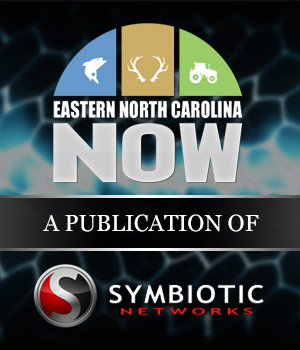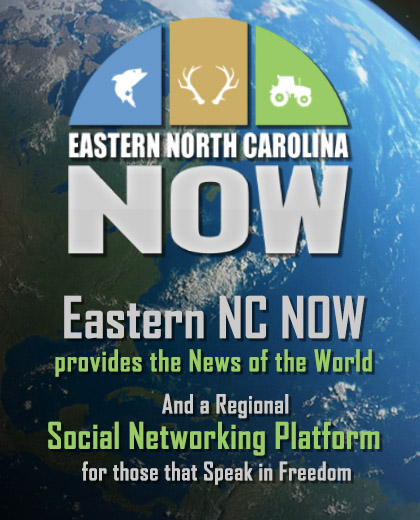Your Public Square Disclosing what is True, what is Real
Southeast Crescent Regional Commission (SCRC) announces first round of funding for 69 North Carolina counties
The Southeast Crescent Regional Commission (SCRC) - a federal-state partnership that promotes and encourages economic development in certain southeastern states - has announced $4,466,111 in available funding for 69 North Carolina counties to revitalize and transform communities, spurring economic development.
This round of funding will focus on supporting the following areas: public infrastructure projects, basic health care, access to affordable housing, business and workforce development, resource conservation and preservation, tourism, and recreation.
Funding for projects will be between $50,000 and $500,000. The mandatory pre-application portal opens June 19, 2023 at noon. Pre-applications are due July 21, 2023 at 5 p.m. Applicants can access the pre-application portal and required forms at scrc.gov.
"We are beyond thrilled to launch the agency's first grant cycle," said Dr. Clyburn Reed, SCRC Federal Co-Chair. "These funds serve as a catalyst to grow our economy by building the future workforce, creating opportunities for growth and rebuilding infrastructure."
Organizations seeking funding should review the goals and objectives for each of the focus areas.
Organizations seeking funding for investments in critical infrastructure should focus on expanding basic water and sewer infrastructure, expanding access to affordable and reliable digital infrastructure, or expanding regional transportation infrastructure systems and transit services. Examples of potential projects include downtown Wi-Fi, industrial access roads, water and sewer projects that result in job creation and/or retention, industrial site development, infrastructure planning and transportation planning.
For the goal of improving health and support services access and outcomes, projects should support access to affordable, high-quality healthcare and services that support mental and physical health or provide support to build capacity for navigating and accessing support services. Examples of potential projects include telehealth programs, peer support programs, health care training programs, and rural health care clinics.
Organizations with projects focused on the goal of strengthening workforce capacity should promote workforce development programs for local, high demand job opportunities or increase enrollment in and completion of critical training programs by investing in wrap-around services. Examples of potential projects include k-12 education programs, career pathway program development, college access programs, supporting programs that offer employees wrap-around services and workforce development programs.
For the goal of fostering entrepreneurial and business development activities, organizations should focus on projects that support the expansion of access to business capital to support innovation, entrepreneurship, and economic equity or projects that invest in programs and business opportunities addressing critical challenges while attracting and retaining talent. Examples of potential projects include shared-use kitchens, co-package plants, small business incubators, regional agriculture markets, community loan funds, industry cluster development, small business plan competitions, and small business mentorship programs.
Organizations with projects focused on the goal of expanding affordable housing stock and access should focus on increasing access to services and legal assistance to resolve title, heirship, land tenure and eviction issues; supporting enrollment in and access to homebuyer programs; or investing in efforts to improve the affordability and availability of quality housing across the region. Examples of potential projects include programs that provide services on title, heirship, land tenure and eviction issues, support programs that provide homebuyer education and training and regional planning projects, community economic development planning efforts. Programs benefiting under this goal should aid a wide-ranging population and strive to build capacity to provide these services over a long period of time.
For the goal of promoting environmental, conservation, preservation, and access, organizations should focus on projects that invest in air, water and soil clean-up efforts that impact historically disadvantaged communities or preserve and expand access to natural resources to increase outdoor recreation and tourism opportunities. Examples of potential projects include regional planning projects, community economic development planning, local food, farm and forestry programs, downtown streetscape projects, downtown revitalization, agritourism development, establishment of gateway community programs, and outdoor recreation economy planning and development.
Eligible organizations include local governments, other political subdivisions of States, Indian Tribes, and nonprofit organizations described in section 501(c) and 501(a).
North Carolina counties eligible for the SCRC funding include: Alamance, Anson, Beaufort, Bertie, Bladen, Brunswick, Cabarrus, Camden, Carteret, Caswell, Chatham, Chowan, Columbus, Craven, Cumberland, Currituck, Dare, Davidson, Duplin, Durham, Edgecombe, Franklin, Gaston, Gates, Granville, Greene, Guilford, Halifax, Harnett, Hertford, Hoke, Hyde, Iredell, Johnston, Jones, Lee, Lenoir, Lincoln, Martin, Mecklenburg, Montgomery, Moore, Nash, New Hanover, Northampton, Onslow, Orange, Pamlico, Pasquotank, Pender, Perquimans, Person, Pitt, Randolph, Richmond, Robeson, Rockingham, Rowan, Sampson, Scotland, Stanly, Tyrrell, Union, Vance, Wake, Warren, Washington, Wayne, and Wilson.
Go Back
This round of funding will focus on supporting the following areas: public infrastructure projects, basic health care, access to affordable housing, business and workforce development, resource conservation and preservation, tourism, and recreation.
Funding for projects will be between $50,000 and $500,000. The mandatory pre-application portal opens June 19, 2023 at noon. Pre-applications are due July 21, 2023 at 5 p.m. Applicants can access the pre-application portal and required forms at scrc.gov.
"We are beyond thrilled to launch the agency's first grant cycle," said Dr. Clyburn Reed, SCRC Federal Co-Chair. "These funds serve as a catalyst to grow our economy by building the future workforce, creating opportunities for growth and rebuilding infrastructure."
Organizations seeking funding should review the goals and objectives for each of the focus areas.
Organizations seeking funding for investments in critical infrastructure should focus on expanding basic water and sewer infrastructure, expanding access to affordable and reliable digital infrastructure, or expanding regional transportation infrastructure systems and transit services. Examples of potential projects include downtown Wi-Fi, industrial access roads, water and sewer projects that result in job creation and/or retention, industrial site development, infrastructure planning and transportation planning.
For the goal of improving health and support services access and outcomes, projects should support access to affordable, high-quality healthcare and services that support mental and physical health or provide support to build capacity for navigating and accessing support services. Examples of potential projects include telehealth programs, peer support programs, health care training programs, and rural health care clinics.
Organizations with projects focused on the goal of strengthening workforce capacity should promote workforce development programs for local, high demand job opportunities or increase enrollment in and completion of critical training programs by investing in wrap-around services. Examples of potential projects include k-12 education programs, career pathway program development, college access programs, supporting programs that offer employees wrap-around services and workforce development programs.
For the goal of fostering entrepreneurial and business development activities, organizations should focus on projects that support the expansion of access to business capital to support innovation, entrepreneurship, and economic equity or projects that invest in programs and business opportunities addressing critical challenges while attracting and retaining talent. Examples of potential projects include shared-use kitchens, co-package plants, small business incubators, regional agriculture markets, community loan funds, industry cluster development, small business plan competitions, and small business mentorship programs.
Organizations with projects focused on the goal of expanding affordable housing stock and access should focus on increasing access to services and legal assistance to resolve title, heirship, land tenure and eviction issues; supporting enrollment in and access to homebuyer programs; or investing in efforts to improve the affordability and availability of quality housing across the region. Examples of potential projects include programs that provide services on title, heirship, land tenure and eviction issues, support programs that provide homebuyer education and training and regional planning projects, community economic development planning efforts. Programs benefiting under this goal should aid a wide-ranging population and strive to build capacity to provide these services over a long period of time.
For the goal of promoting environmental, conservation, preservation, and access, organizations should focus on projects that invest in air, water and soil clean-up efforts that impact historically disadvantaged communities or preserve and expand access to natural resources to increase outdoor recreation and tourism opportunities. Examples of potential projects include regional planning projects, community economic development planning, local food, farm and forestry programs, downtown streetscape projects, downtown revitalization, agritourism development, establishment of gateway community programs, and outdoor recreation economy planning and development.
Eligible organizations include local governments, other political subdivisions of States, Indian Tribes, and nonprofit organizations described in section 501(c) and 501(a).
North Carolina counties eligible for the SCRC funding include: Alamance, Anson, Beaufort, Bertie, Bladen, Brunswick, Cabarrus, Camden, Carteret, Caswell, Chatham, Chowan, Columbus, Craven, Cumberland, Currituck, Dare, Davidson, Duplin, Durham, Edgecombe, Franklin, Gaston, Gates, Granville, Greene, Guilford, Halifax, Harnett, Hertford, Hoke, Hyde, Iredell, Johnston, Jones, Lee, Lenoir, Lincoln, Martin, Mecklenburg, Montgomery, Moore, Nash, New Hanover, Northampton, Onslow, Orange, Pamlico, Pasquotank, Pender, Perquimans, Person, Pitt, Randolph, Richmond, Robeson, Rockingham, Rowan, Sampson, Scotland, Stanly, Tyrrell, Union, Vance, Wake, Warren, Washington, Wayne, and Wilson.
| Sampson Community College builds trades center to address local agriculture industry skills demand | News and Information, The Region | Severe Weather Threat Tomorrow (Monday 6/26/23) |
Latest The Region
|
Our office is currently monitoring an approaching weather system that will bring windy conditions, rain, and the potential for strong storms to our area tomorrow.
Published: Thursday, April 11th, 2024 @ 2:53 pm
By: Eastern NC NOW Staff
|
|
The great misnomer for non Christians that the day Jesus Christ was executed by occupying Romans, celebrated by Christians as "Good" Friday, must be a paradox of ominous proportions.
Published: Saturday, March 30th, 2024 @ 7:52 pm
By: Stan Deatherage
|
|
Republicans Bokhari and Driggs retain seats on city council.
Published: Tuesday, March 26th, 2024 @ 12:50 am
By: Carolina Journal
|
|
Recently, Golden LEAF President, Chief Executive Officer Scott T. Hamilton sat down with Don Flow, Immediate Past Chair of the Golden LEAF Foundation Board of Directors via Zoom and filmed an episode of Critical Conversations.
Published: Monday, March 25th, 2024 @ 1:14 am
By: Eastern NC NOW Staff
|
|
At the December Board meeting, the Golden LEAF Board of Directors awarded $5,540,432 in funding for 50 projects through the Food Distribution Assistance Program.
Published: Friday, March 1st, 2024 @ 11:31 pm
By: Eastern NC NOW Staff
|
|
At the December Board meeting, the Golden LEAF Board of Directors awarded $650,000 to support two projects through the Open Grants Program and $3,080,000 to support five projects through the SITE Program.
Published: Wednesday, February 28th, 2024 @ 12:20 pm
By: Eastern NC NOW Staff
|
|
Members of the North Carolina Rural Health Association (NCRHA) visited Washington, D.C., on Feb. 14, 2024, to meet with elected officials and advocate for policies to improve access to care in rural areas.
Published: Wednesday, February 28th, 2024 @ 12:51 am
By: Eastern NC NOW Staff
|
|
Today, the Golden LEAF Board of Directors awarded $650,000 to support two projects through the Open Grants Program and $3,080,000 to support five projects through the SITE Program.
Published: Monday, February 26th, 2024 @ 10:04 am
By: Eastern NC NOW Staff
|
|
WASHINGTON, N.C. –– The Cherry Run Solid Waste Collection Site, located at 2860 Cherry Run Road, Washington, NC 27889, will temporarily close for repairs on Monday, Nov. 20
Published: Saturday, February 24th, 2024 @ 11:32 am
By: Eastern NC NOW Staff
|
|
The state Supreme Court has agreed to take up a case involving a property-rights dispute over a sewer line in Apex. The town requested a review from the high court in June 2021.
Published: Friday, February 23rd, 2024 @ 3:17 pm
By: Carolina Journal
|
|
Beaufort County Department of Social Services is making final preparations for the launch of North Carolina’s Medicaid Expansion on Friday, Dec. 1, 2023.
Published: Friday, February 23rd, 2024 @ 1:58 pm
By: Eastern NC NOW Staff
|
|
Triangle Business Journal (TBJ) has named State Employees’ Credit Union (SECU) Foundation a recipient of its 2023 Corporate Philanthropy Award.
Published: Thursday, February 22nd, 2024 @ 10:04 am
By: Eastern NC NOW Staff
|
|
Guilford County is considering an additional 1% Prepared Food and Beverage Tax, with the support of Greensboro Mayor Nancy Vaughan.
Published: Wednesday, February 21st, 2024 @ 12:12 am
By: Carolina Journal
|
























